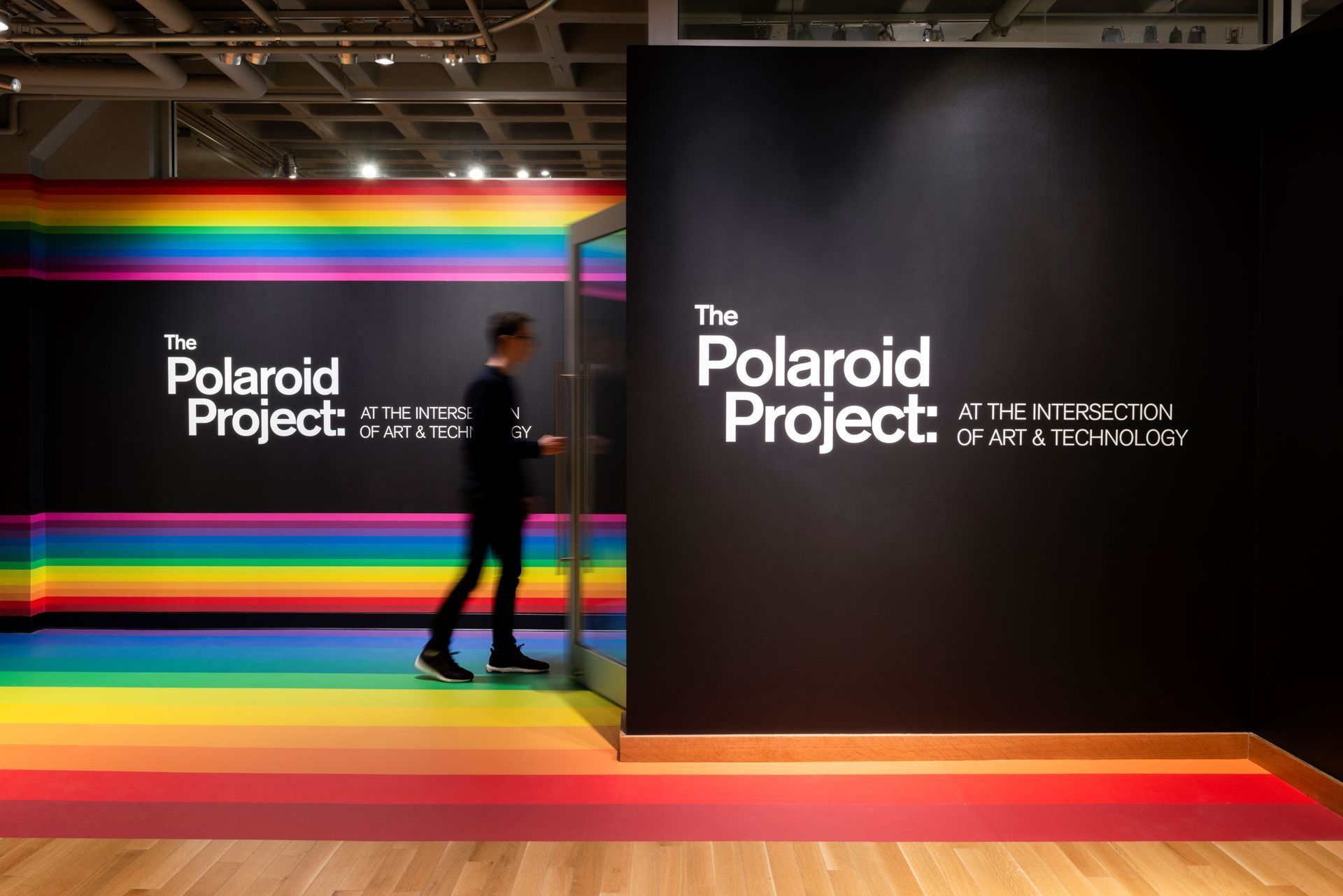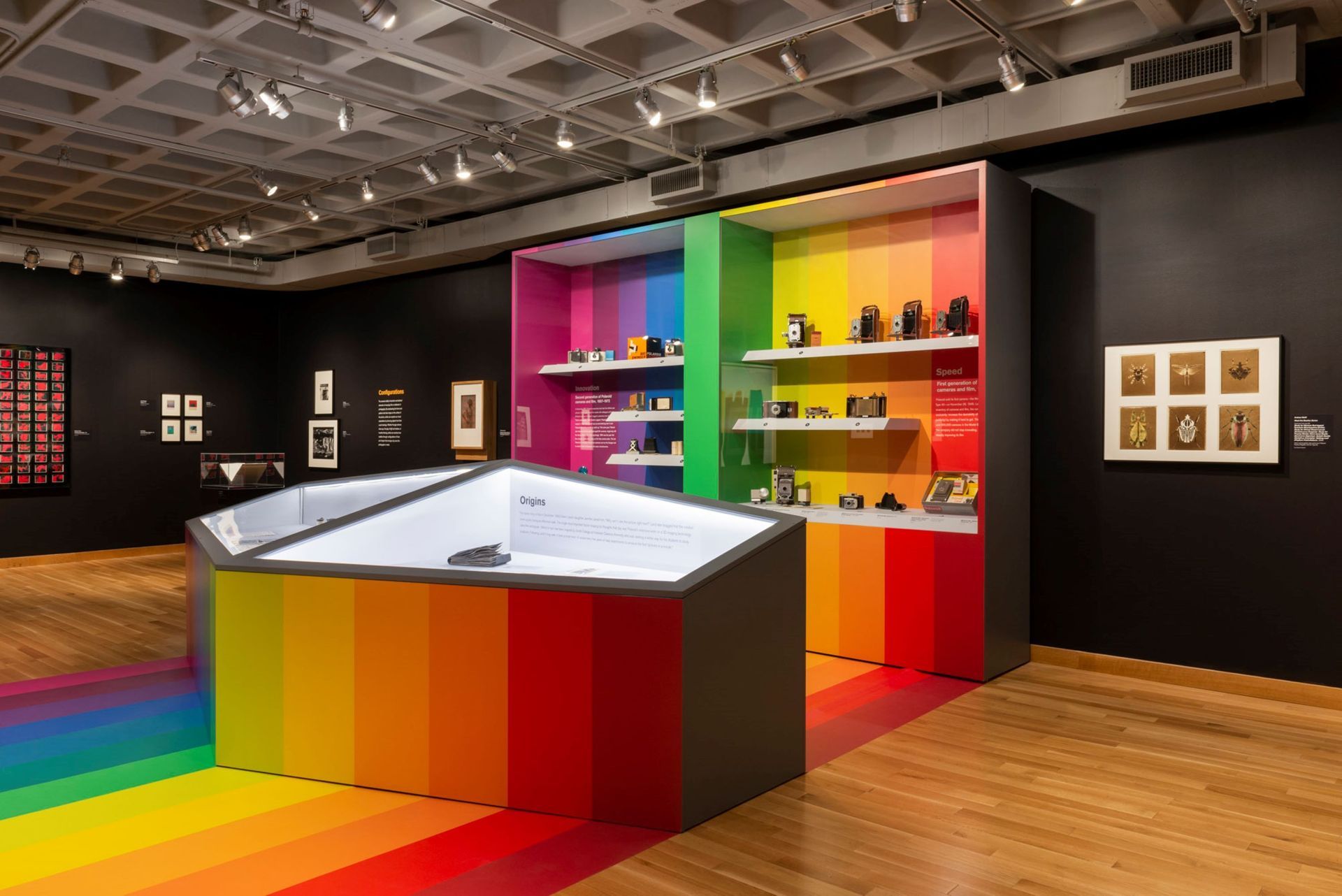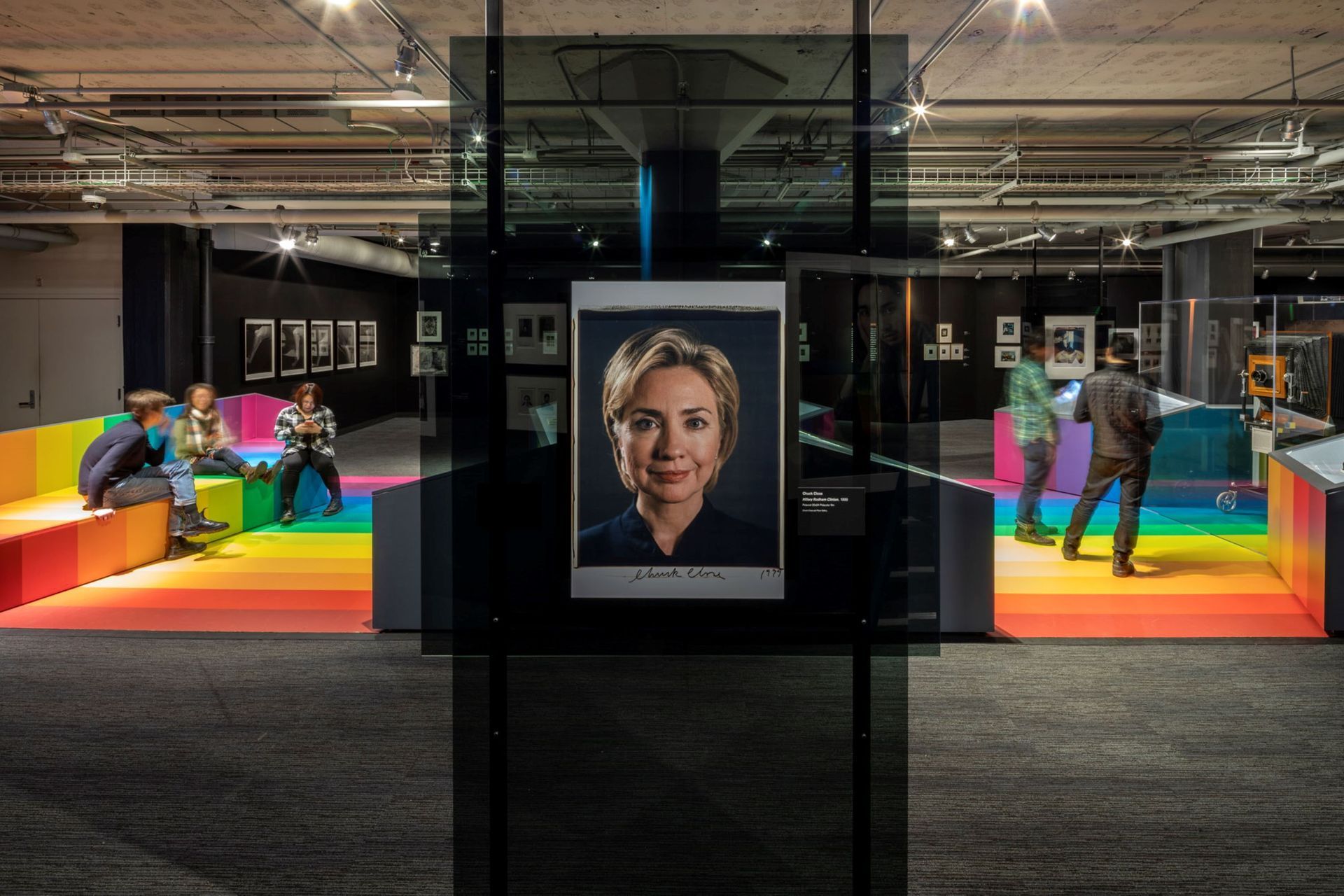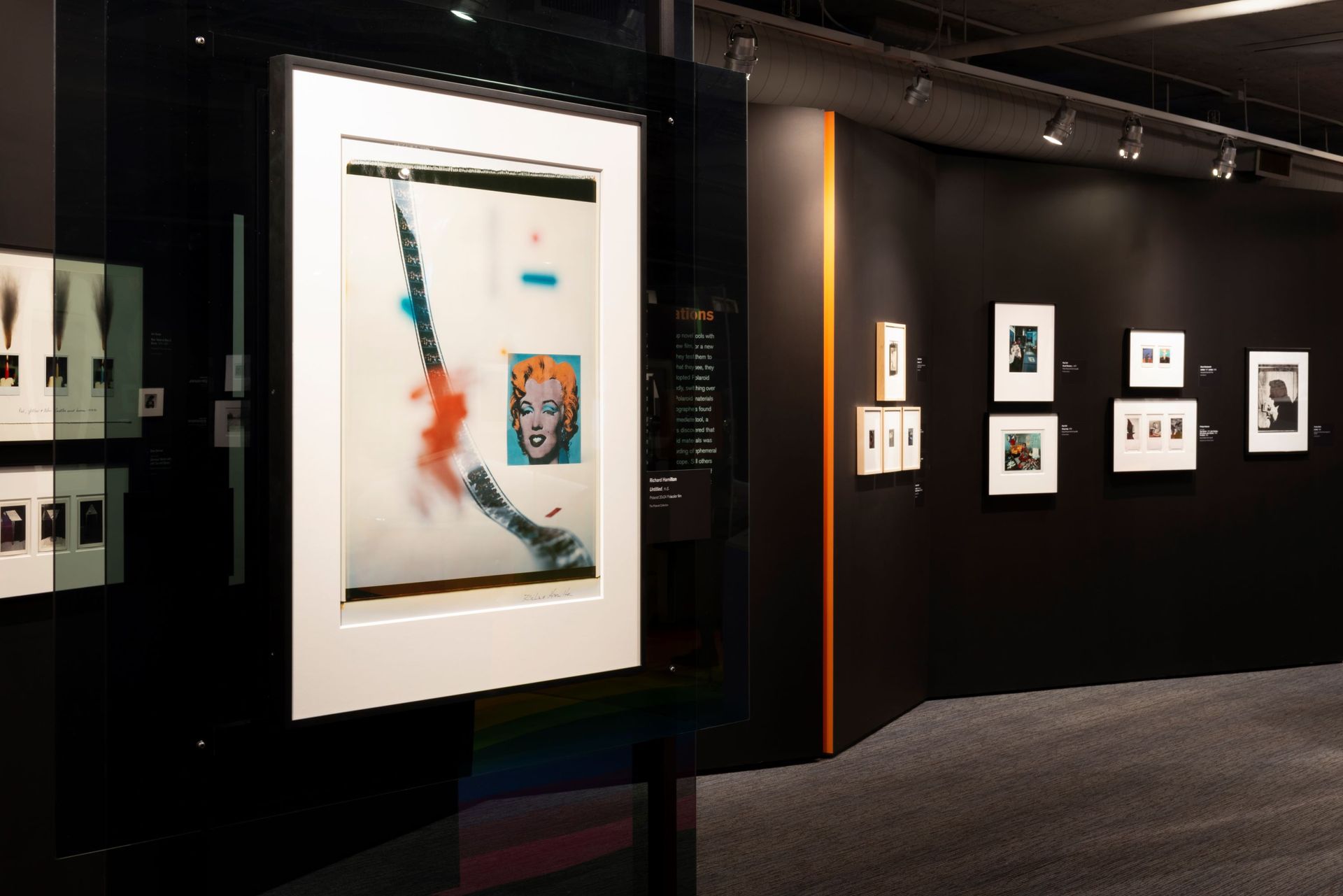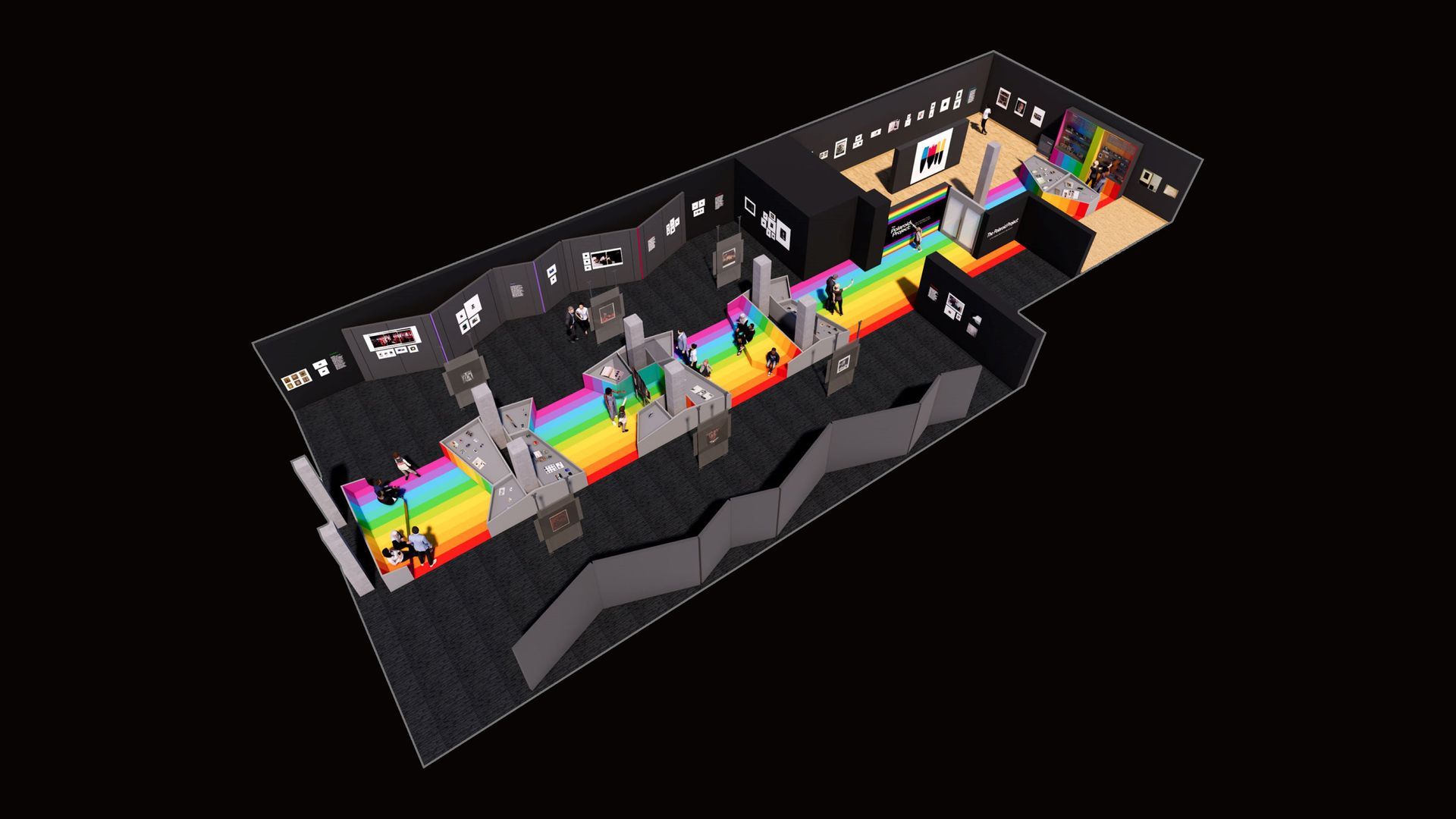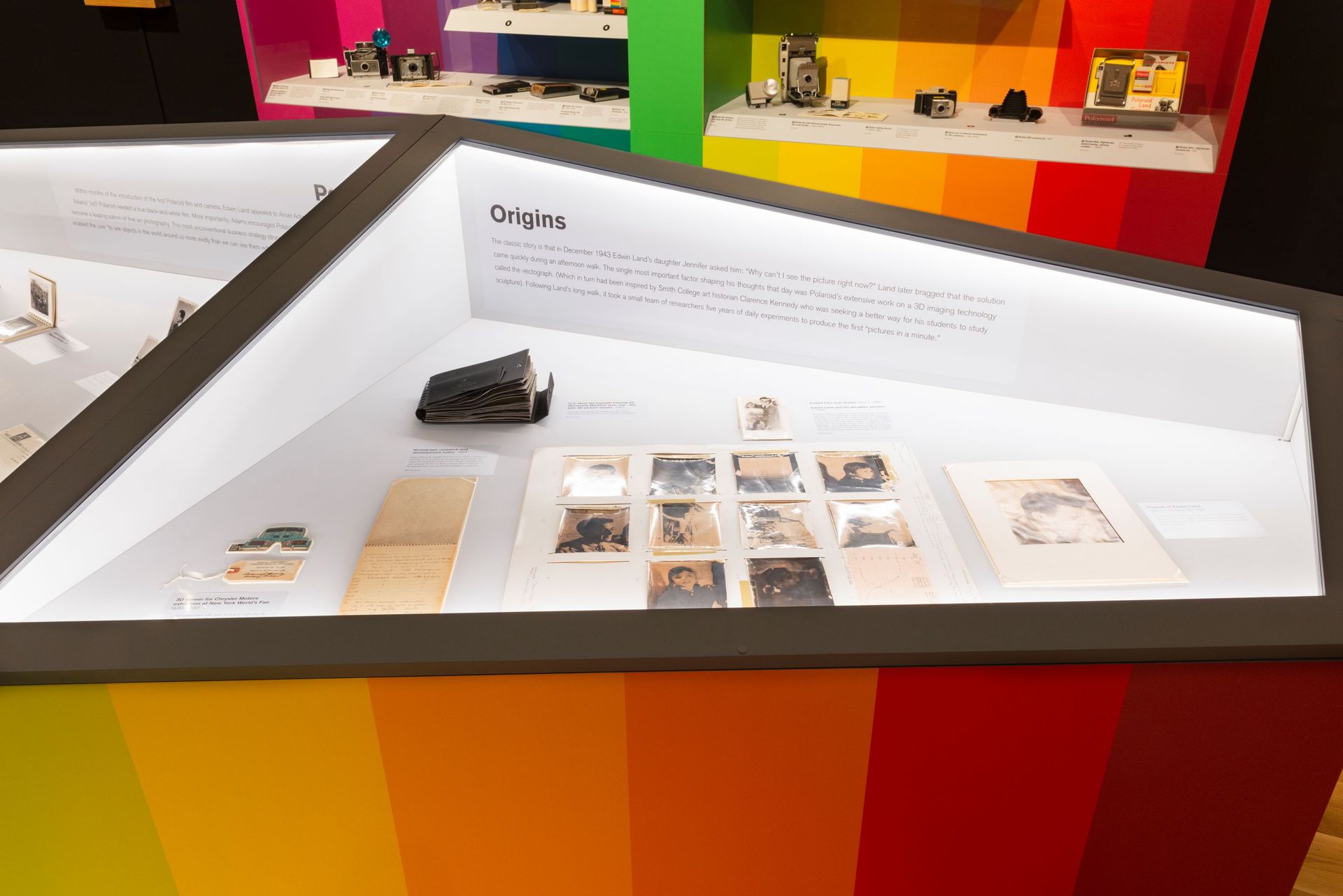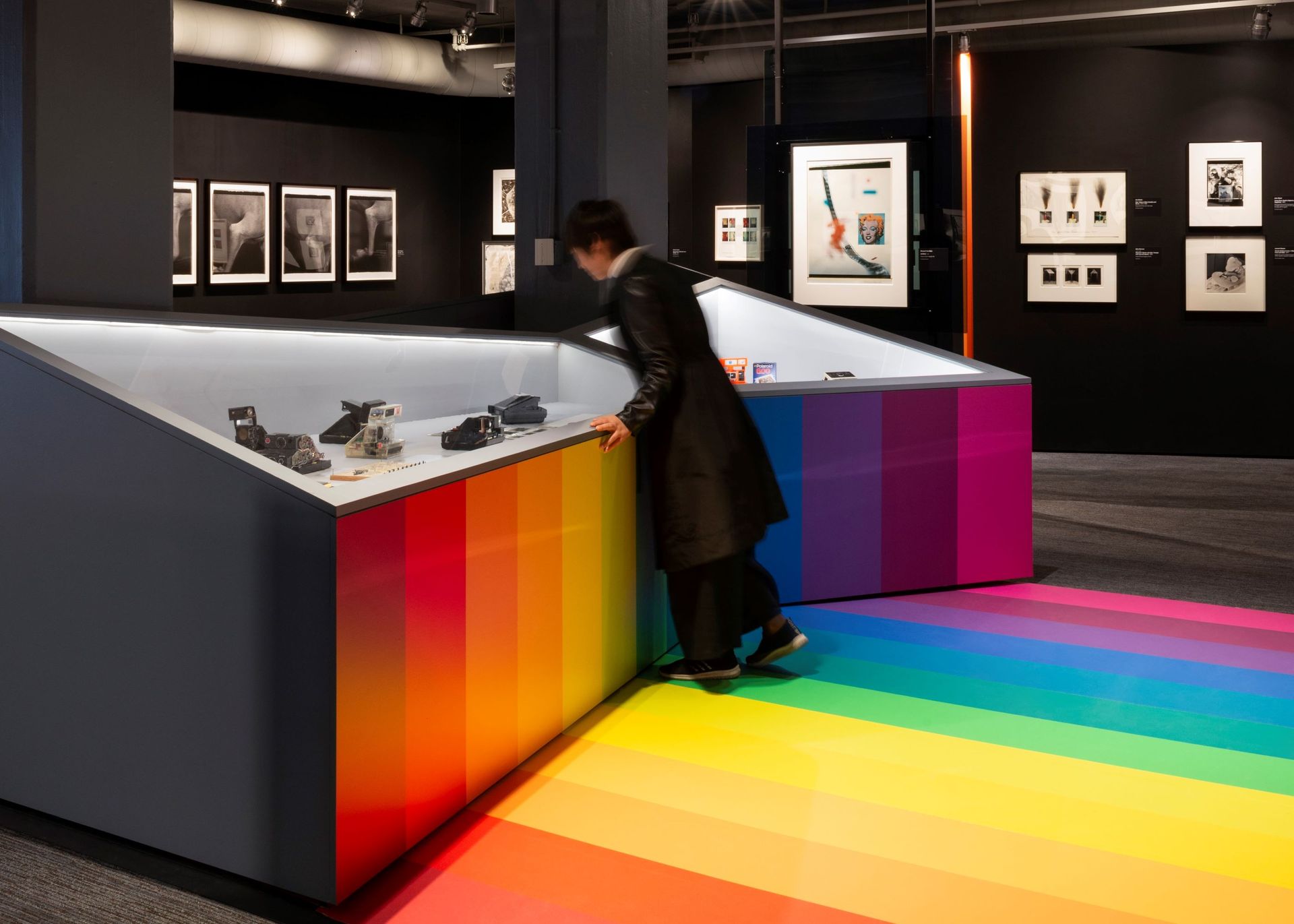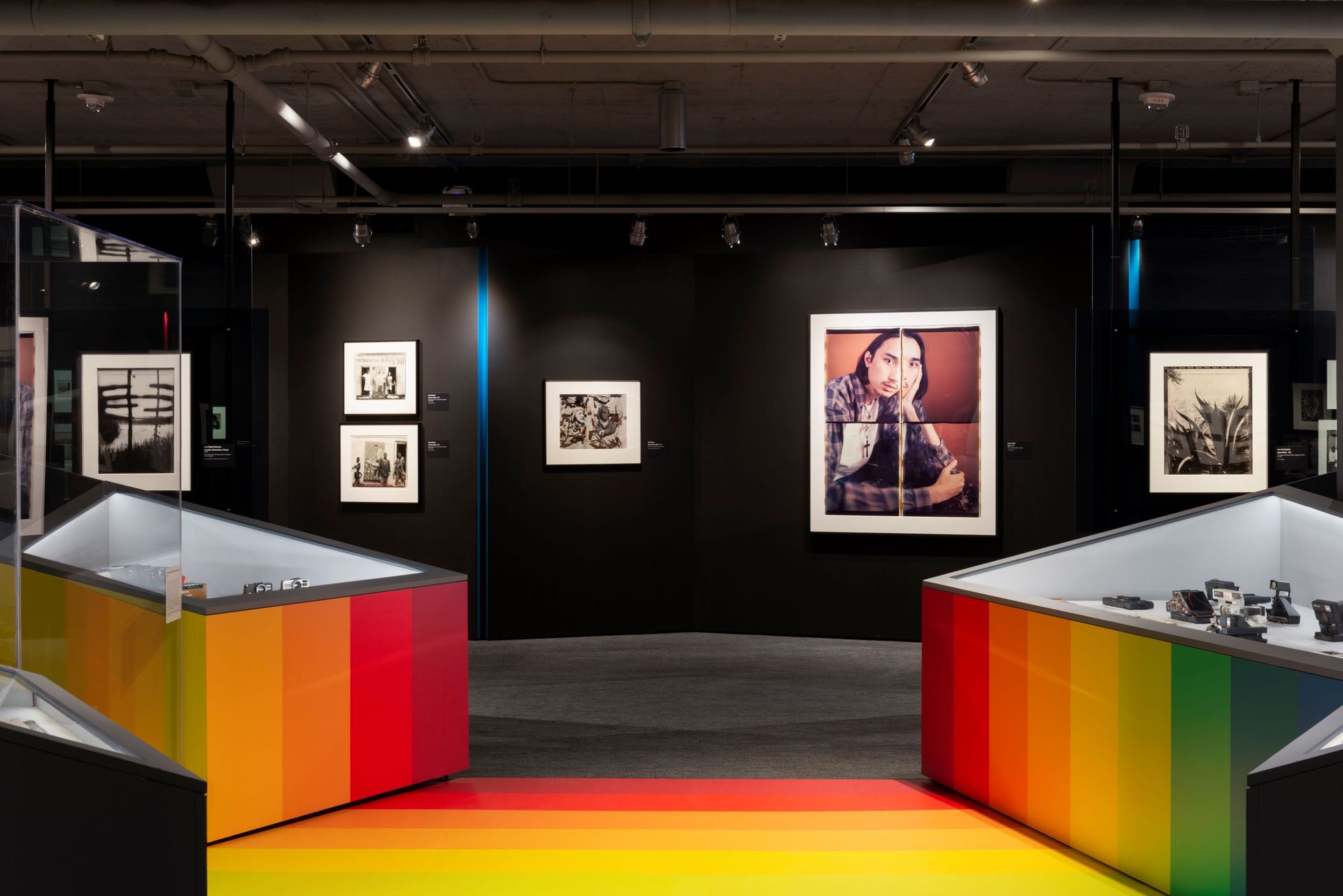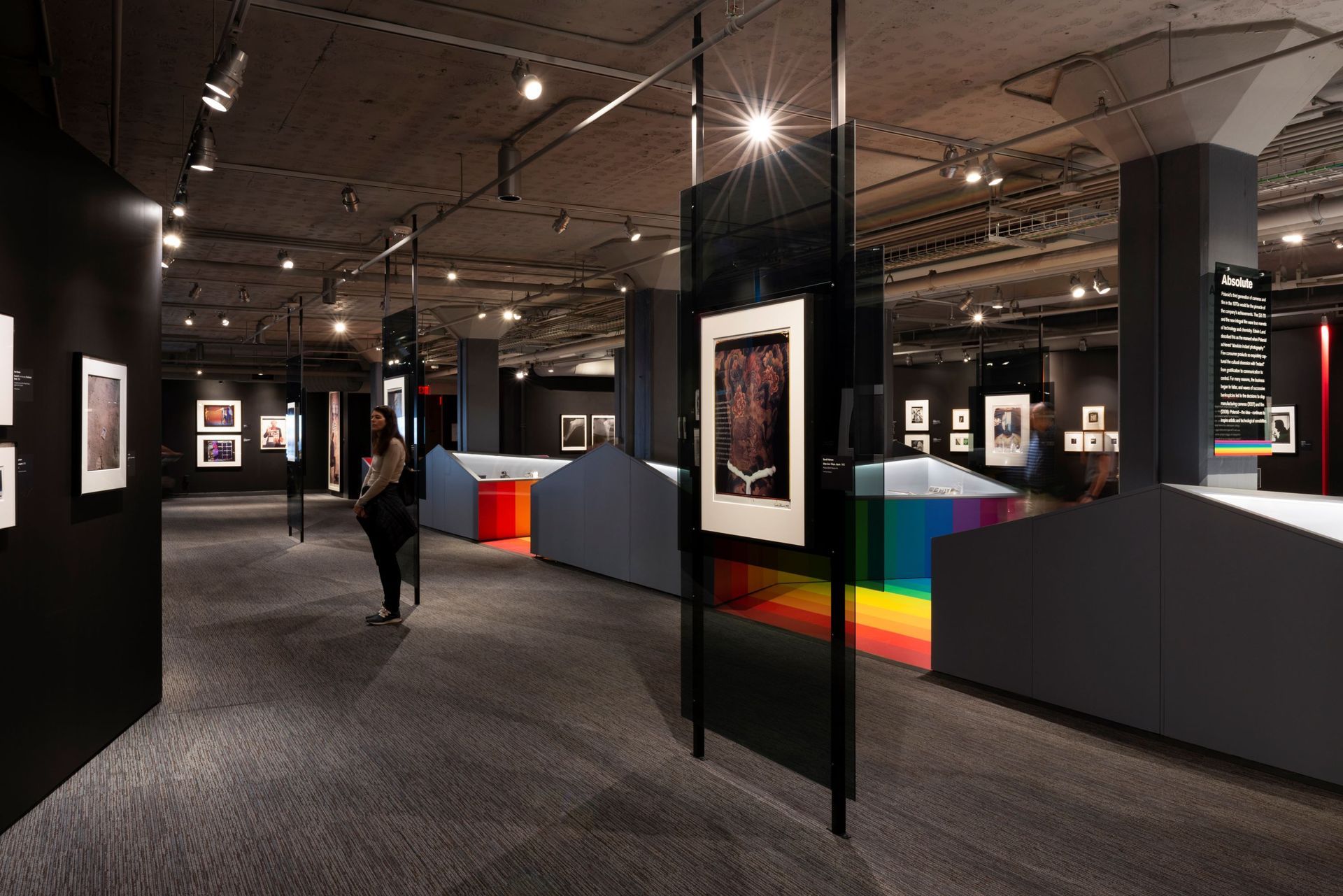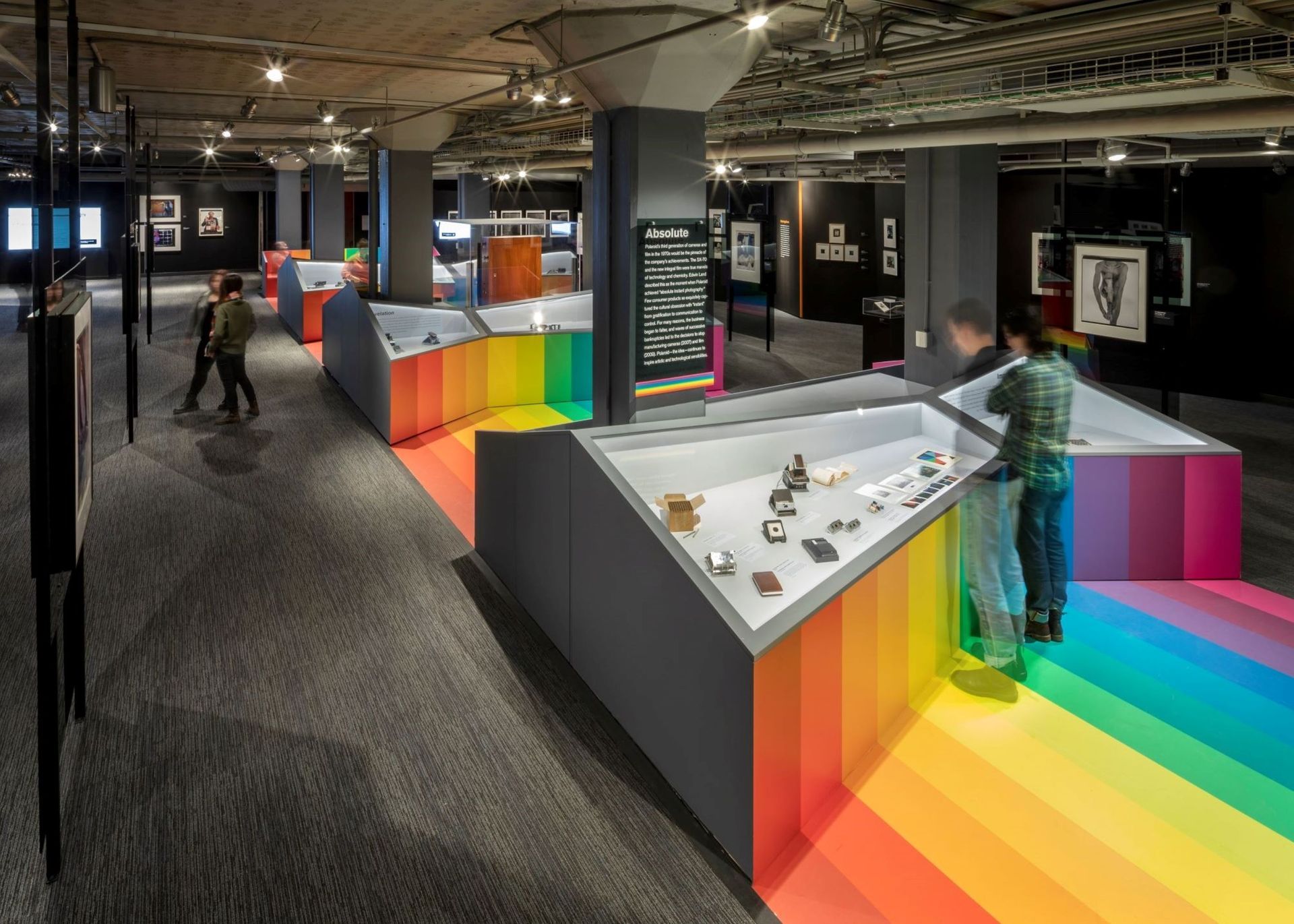

THE POLAROID PROJECT: AT THE INTERSECTION OF ART AND TECHNOLOGY
MIT Museum, Cambridge MA
The Polaroid Project: At the Intersection of Art and Technology
was an exhibition in two adjacent gallery spaces that explored various dimensions of the relationship between the art and technology of Polaroids, with over 200 photographs and 100 objects. Taking cues from the iconic stripe on the original OneStep instant camera, the design featured a continuous rainbow spine. Functionally, the rainbow solved a myriad of design problems. Since the exhibition was on display in two adjacent but separate gallery spaces, the rainbow tied them together. Visitors would enter the exhibition at the space in between the adjacent gallery spaces. The rainbow served as a visual beacon, framing the title and creating a clear, bold entrance to the show. The rainbow also tied the object cases together; since the objects were presented chronologically, the linear quality of the rainbow allowed visitors to trace the trajectory of the Polaroid Company from its founding, through its ups and downs, and to its ultimate demise by following it from end to end. The rainbow also morphed into visitor seating, further encouraging the immersiveness of the exhibition experience. Photographs were displayed along the perimeter on “baffle” walls inspired by the interior of a massive 20x24 instant camera, which was also prominently displayed in the exhibition. The project received an Architect’s Newspaper 2020 Best of Design honorable mention award and was a finalist for best environmental graphics and branding from Interior Magazine.
tskpxikd • 119 braintree st, suite 201 • boston, MA • 347-523-1033 • 32 heather ave • san francisco,CA •
office@tskp-ikd.com
Copyright 2023, tskpxikd design

